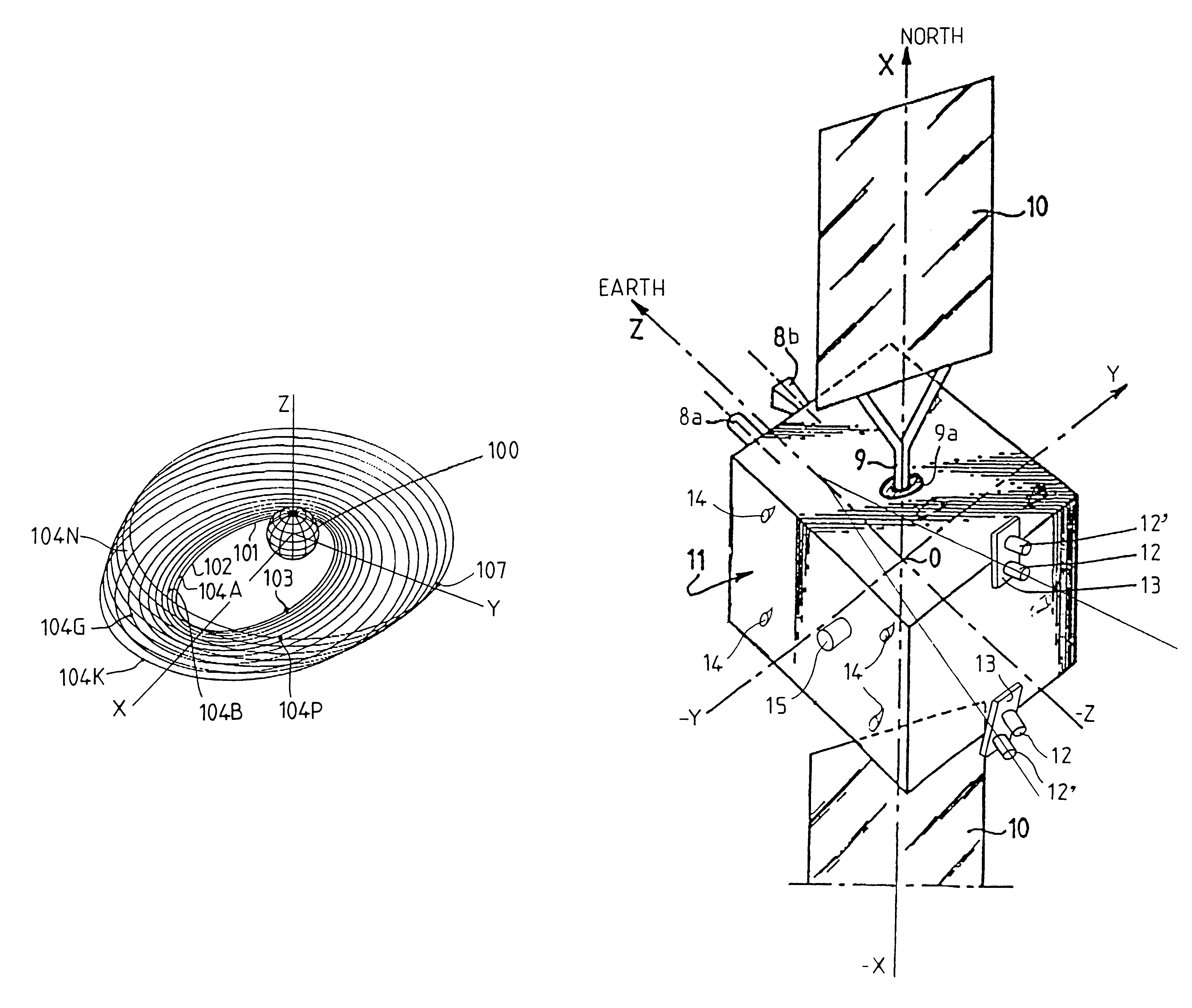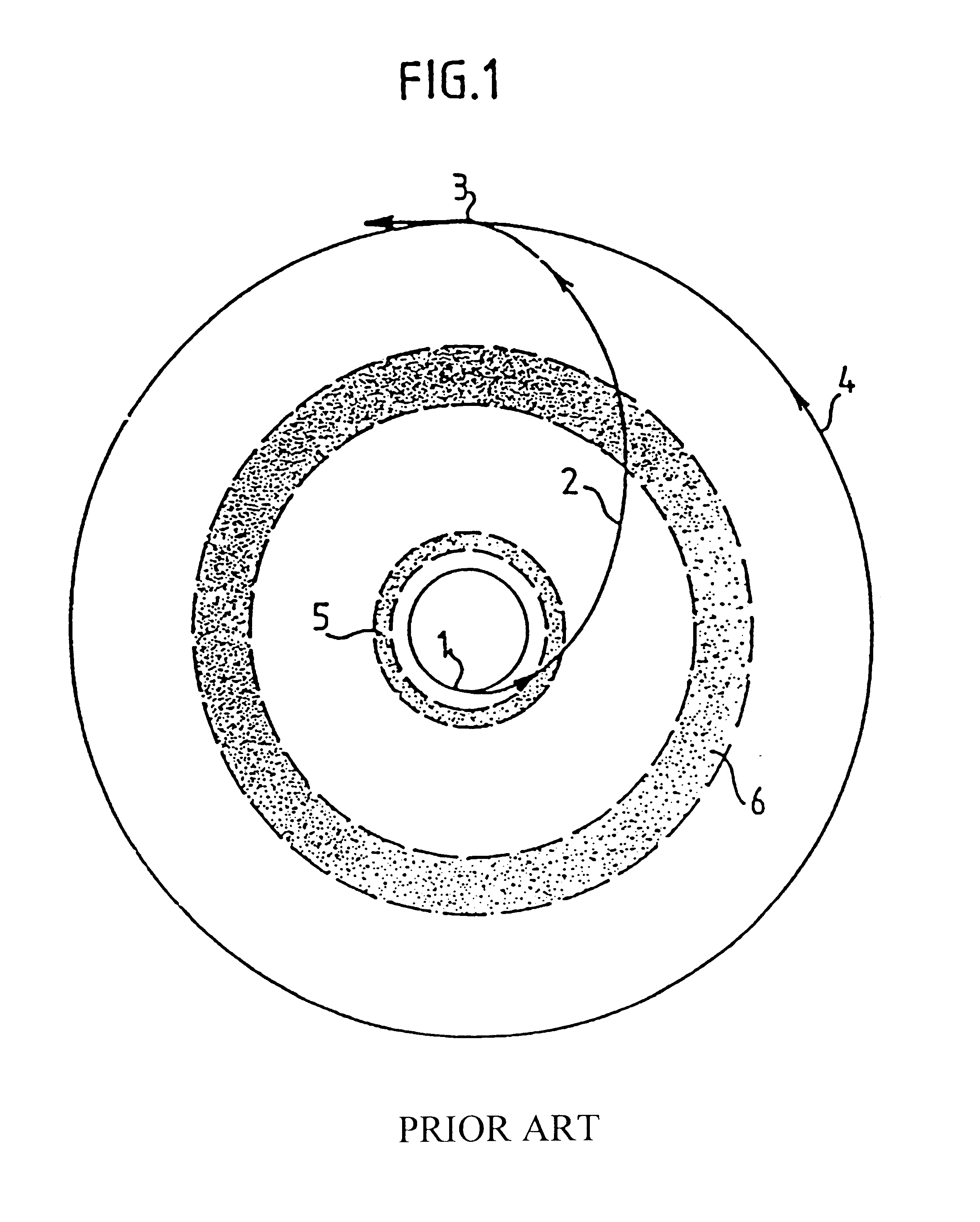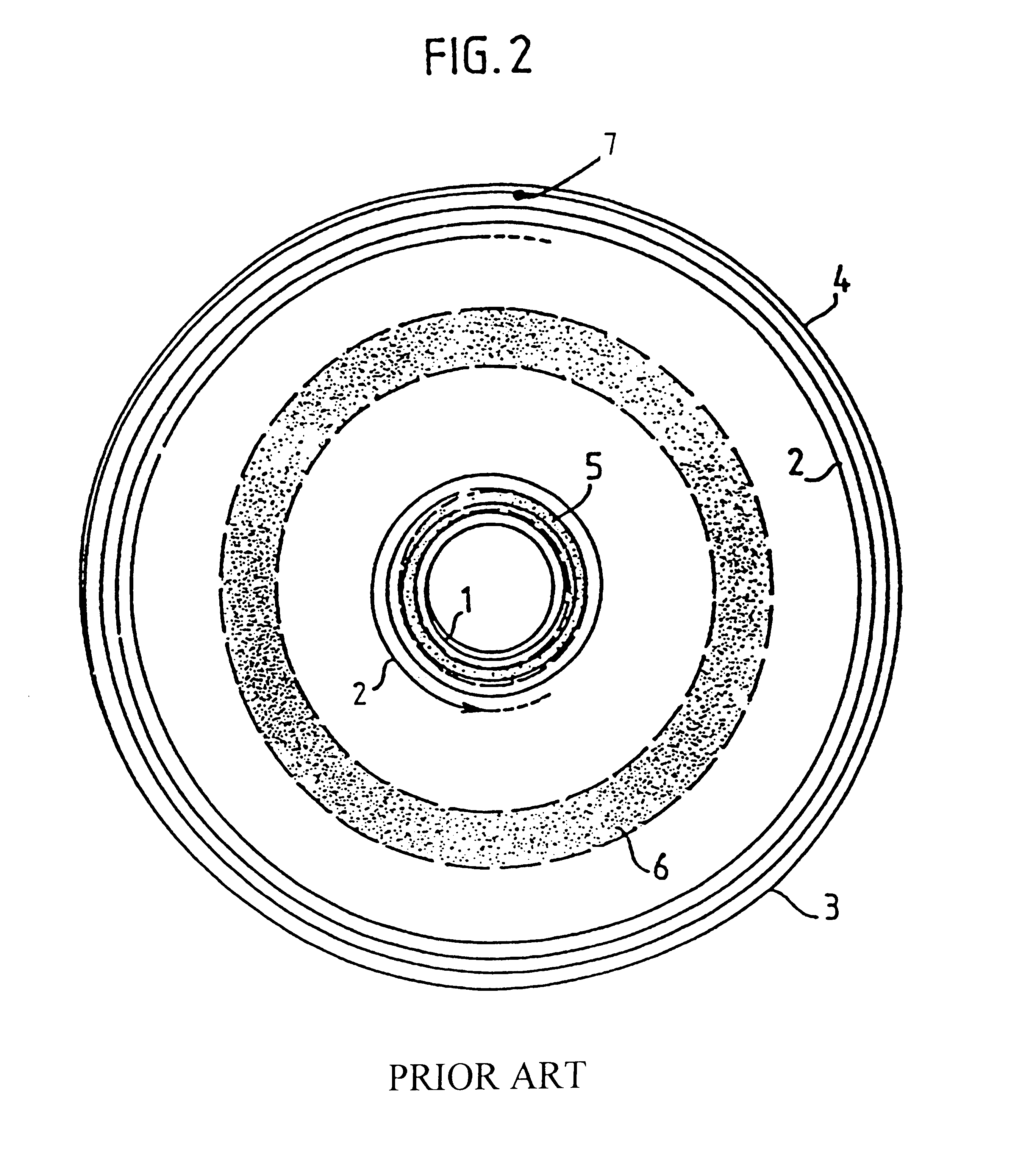Method and a system for putting a space vehicle into orbit, using thrusters of high specific impulse
a technology of high specific impulse and space vehicle, applied in the direction of attitude control, transportation and packaging, cosmonautic vehicles, etc., can solve the problems of increasing the financial burden, reducing the thrust provided for given consumption of electrical or thermal power, and limited power, so as to achieve low thrust and high specific impulse
- Summary
- Abstract
- Description
- Claims
- Application Information
AI Technical Summary
Benefits of technology
Problems solved by technology
Method used
Image
Examples
Embodiment Construction
Three conventional methods that have already been proposed for placing a satellite on a circular orbit, and they are recalled initially with reference to FIGS. 1 to 3.
FIG. 1 is a diagram of the various stages in the Hohmann maneuver, comprising a launch stage 1 during which the rocket places a satellite on a low orbit, followed by a transfer stage 2 during which the satellite is injected by an increase of speed at perigee onto an elliptical orbit whose apogee corresponds to the desired final altitude, and at which a second increase of speed 3 serves to inject the satellite onto a final circular orbit 4. Portions referenced 5 and 6 represent zones of intense radiation known as the Van Allen belts.
FIG. 2 shows the use of a spiral trajectory implementing acceleration that is very low, but continuous. There can be seen the stage 1 of launching into low circular orbit, and the transfer stage 2 which is constituted by the spiral orbit proper. Reference 7 shows the location where spiral fi...
PUM
 Login to View More
Login to View More Abstract
Description
Claims
Application Information
 Login to View More
Login to View More - R&D
- Intellectual Property
- Life Sciences
- Materials
- Tech Scout
- Unparalleled Data Quality
- Higher Quality Content
- 60% Fewer Hallucinations
Browse by: Latest US Patents, China's latest patents, Technical Efficacy Thesaurus, Application Domain, Technology Topic, Popular Technical Reports.
© 2025 PatSnap. All rights reserved.Legal|Privacy policy|Modern Slavery Act Transparency Statement|Sitemap|About US| Contact US: help@patsnap.com



